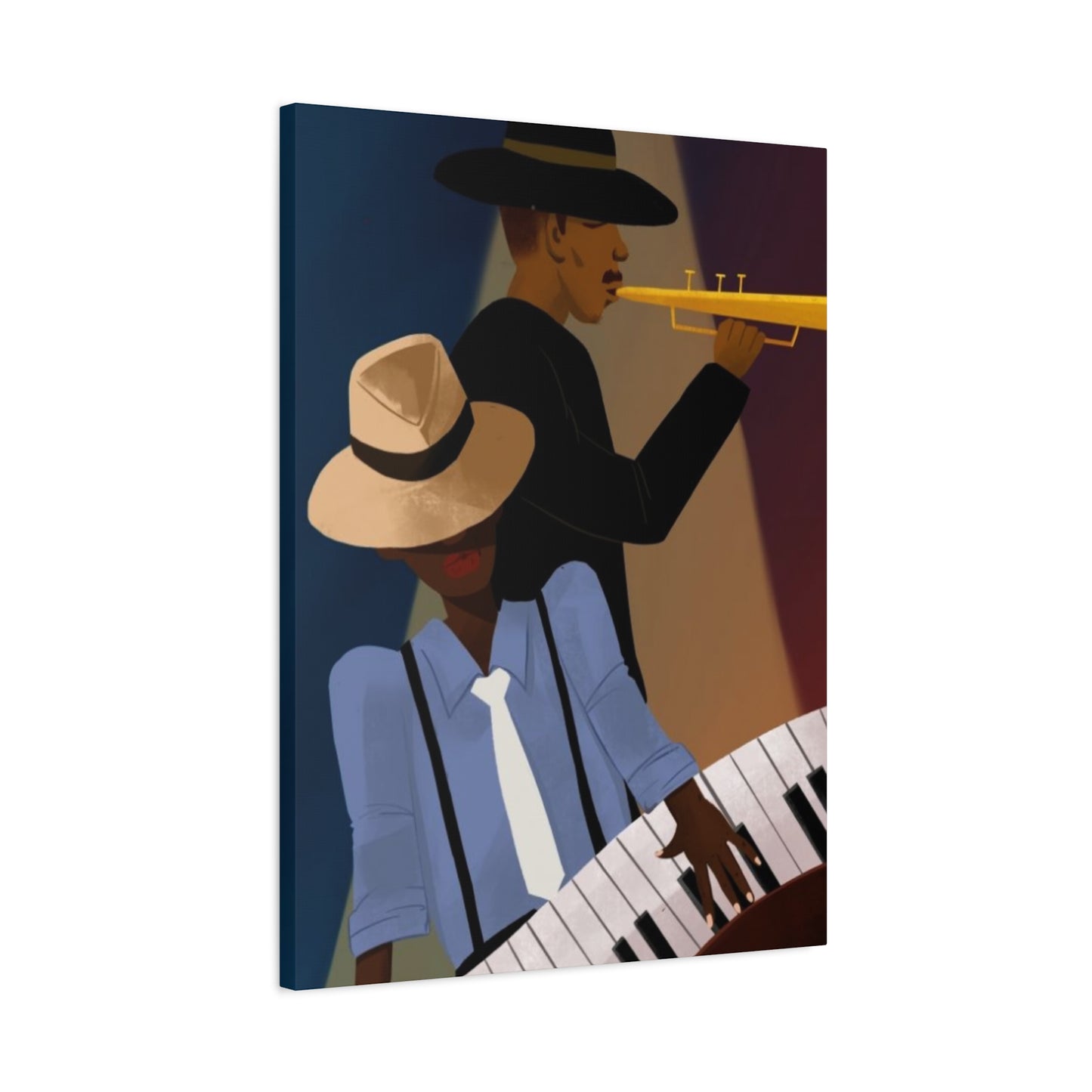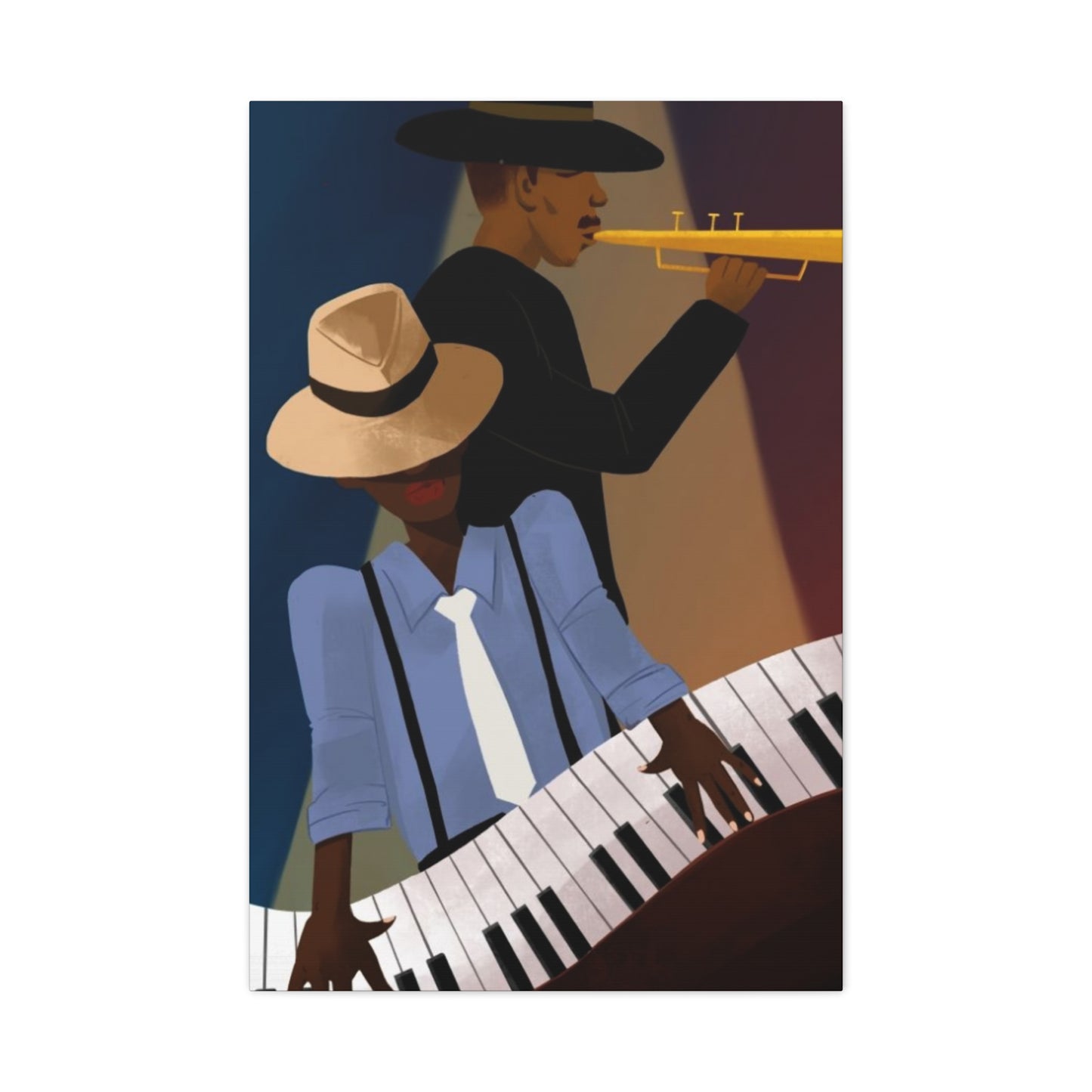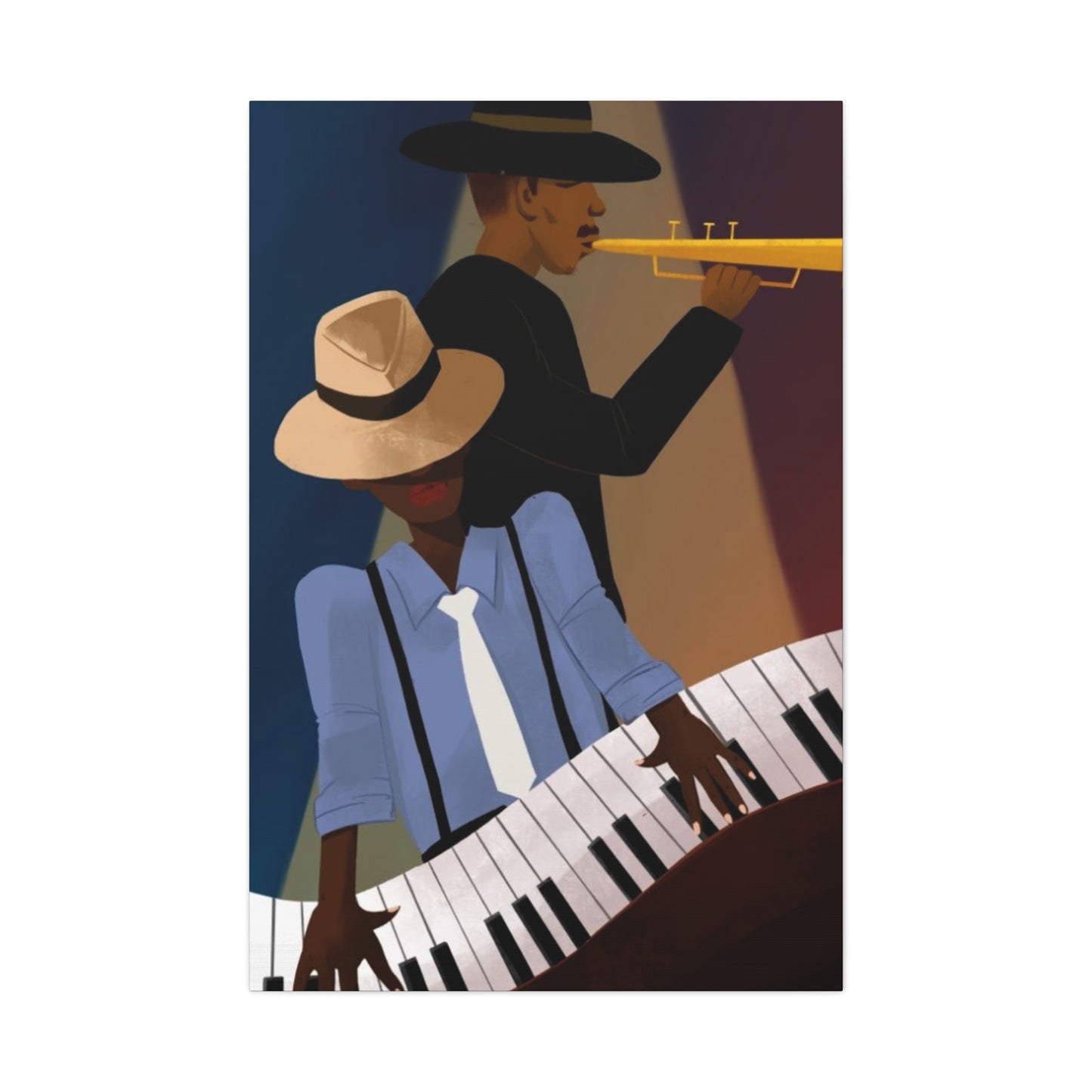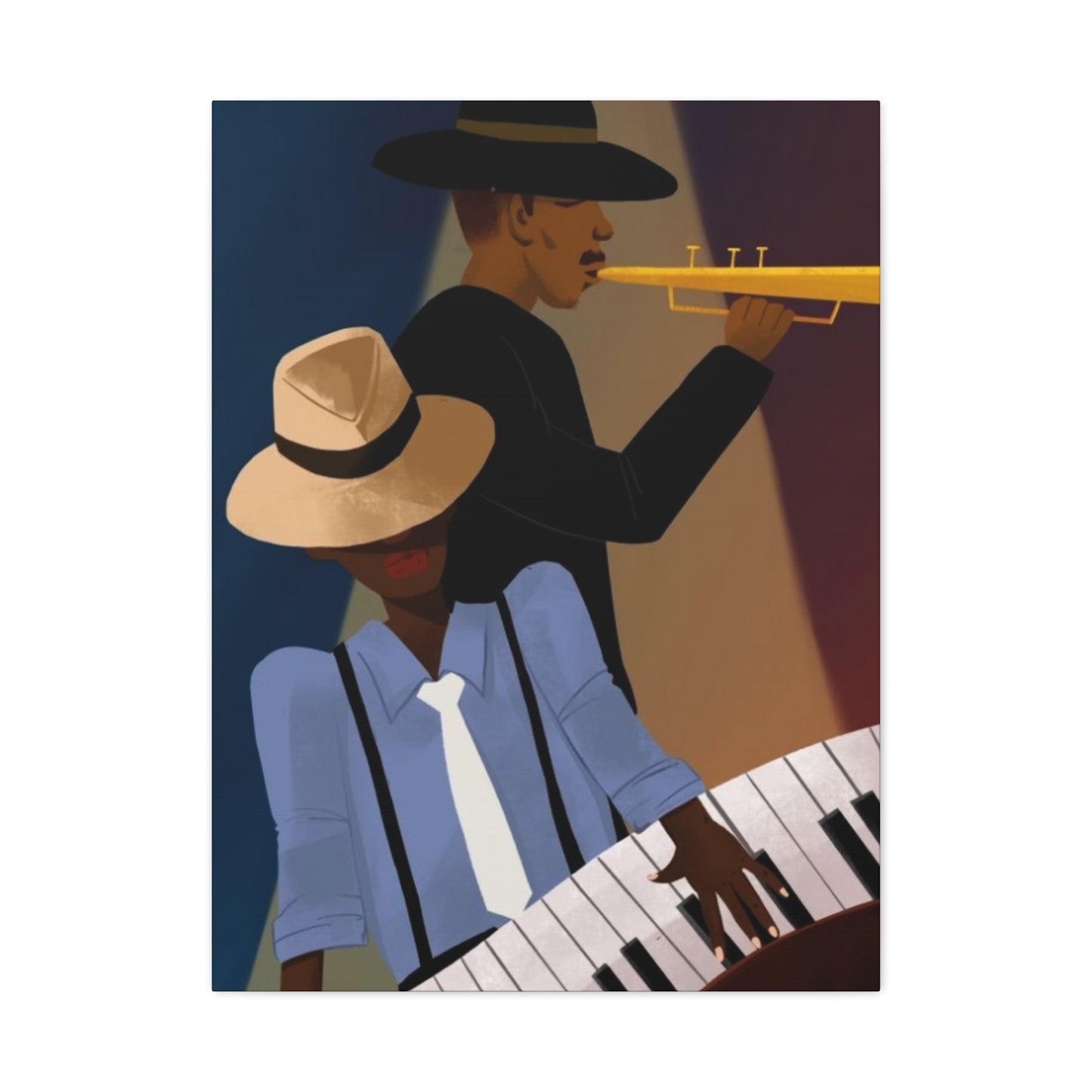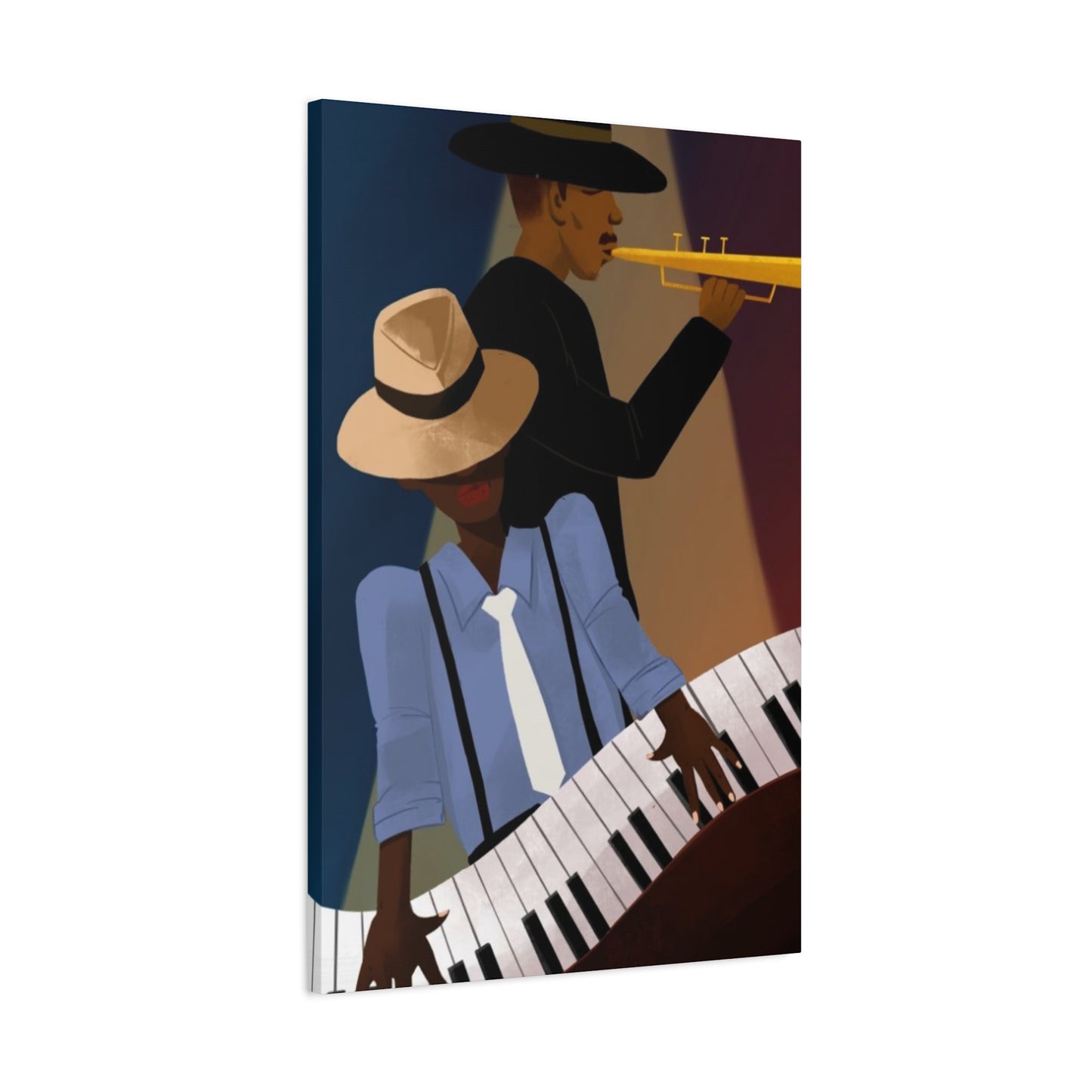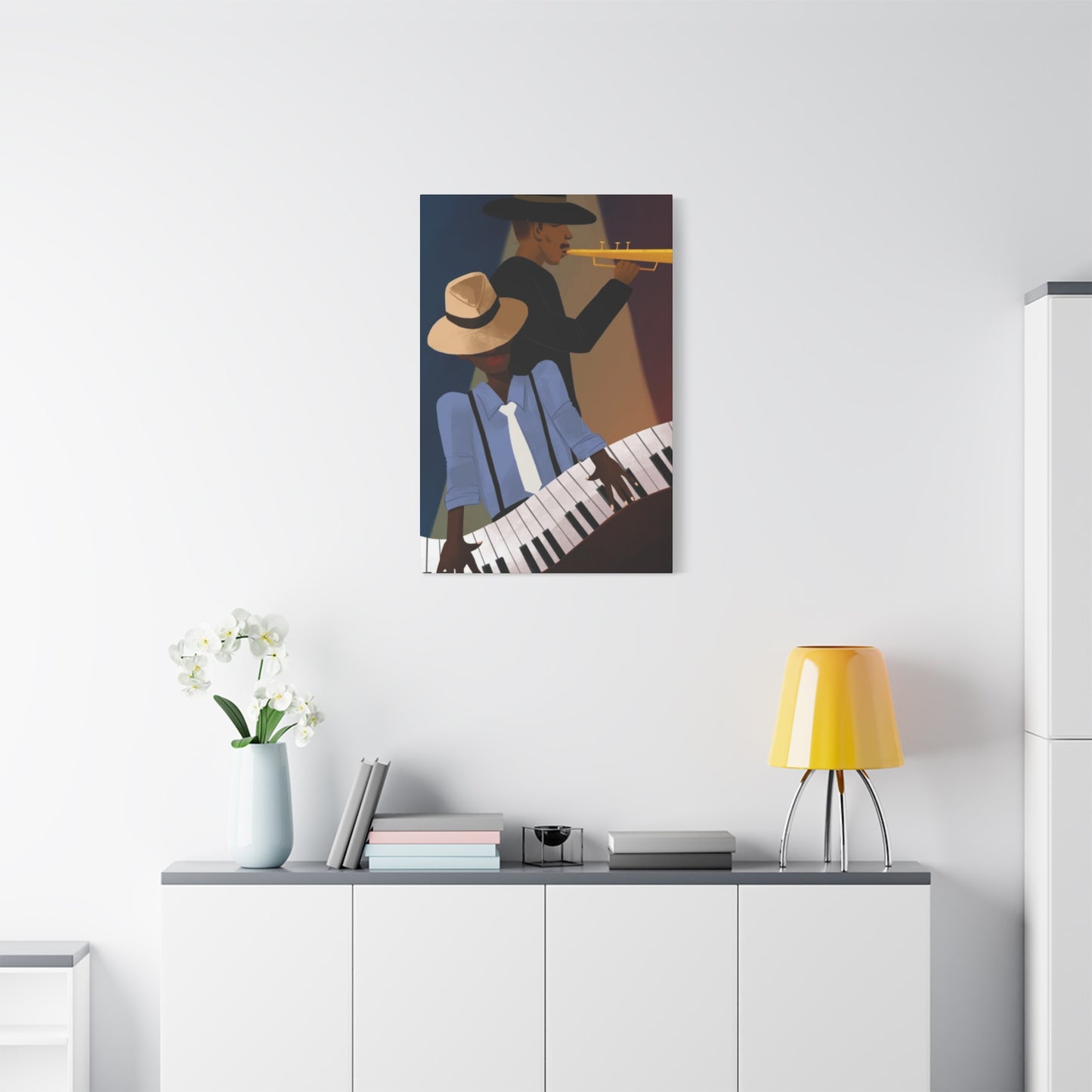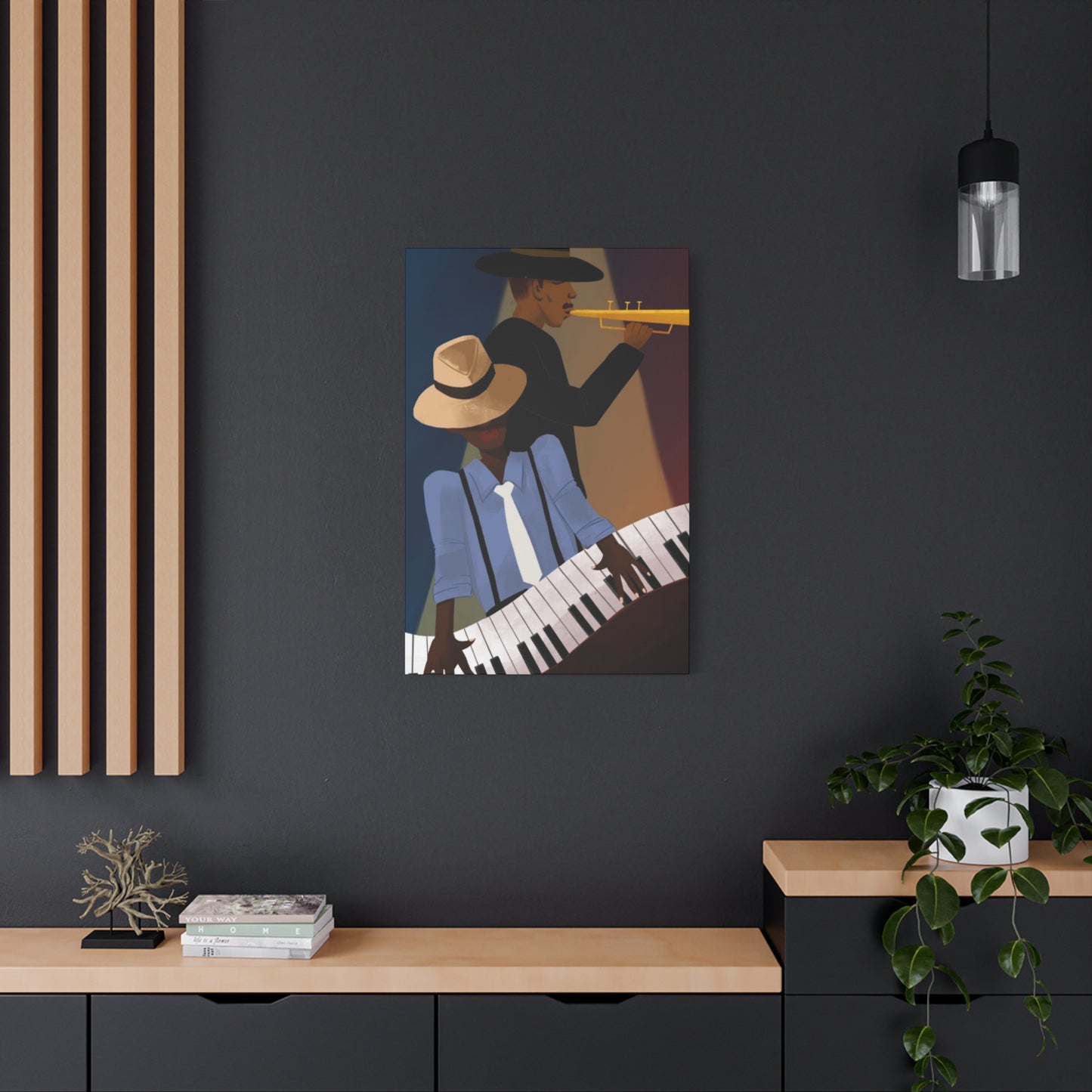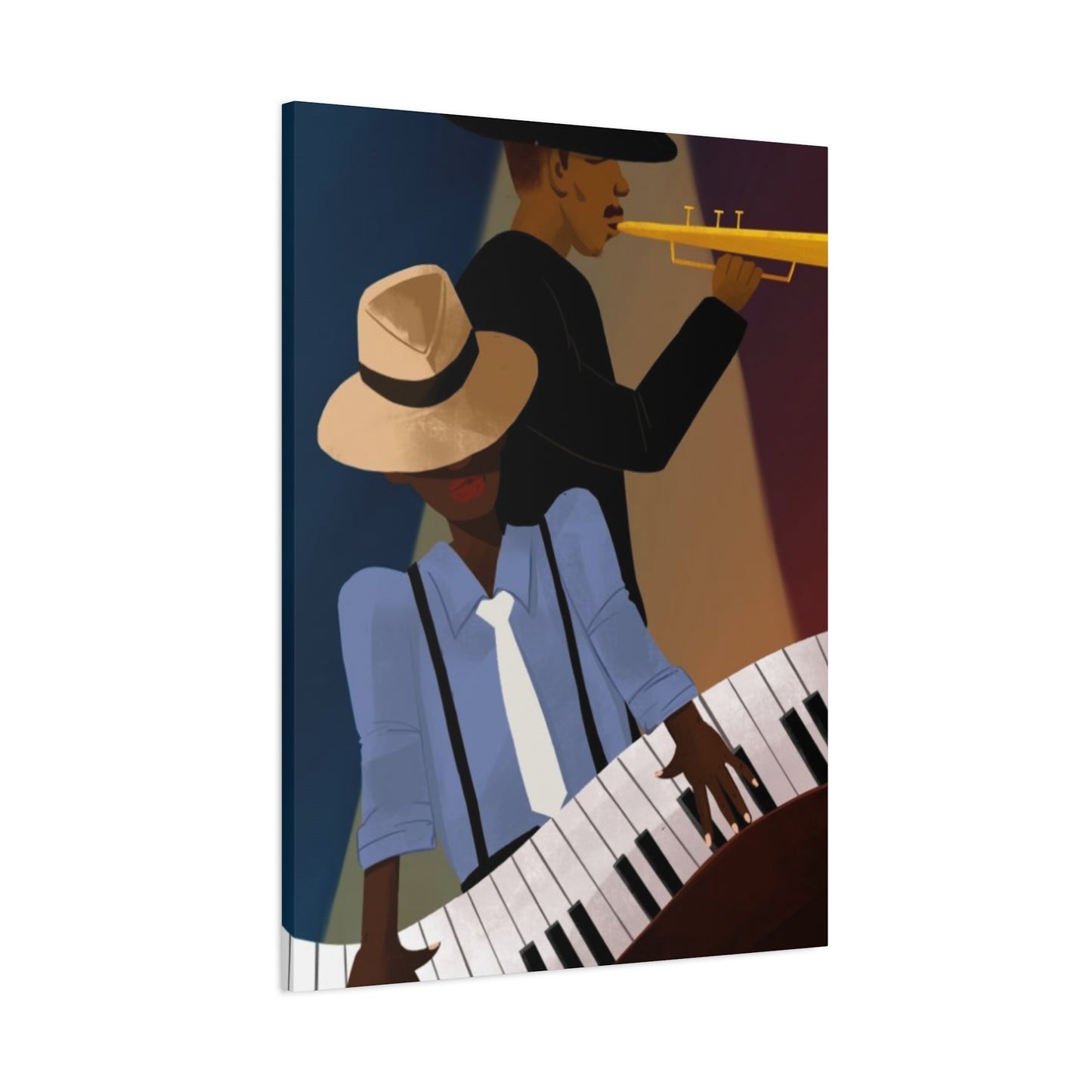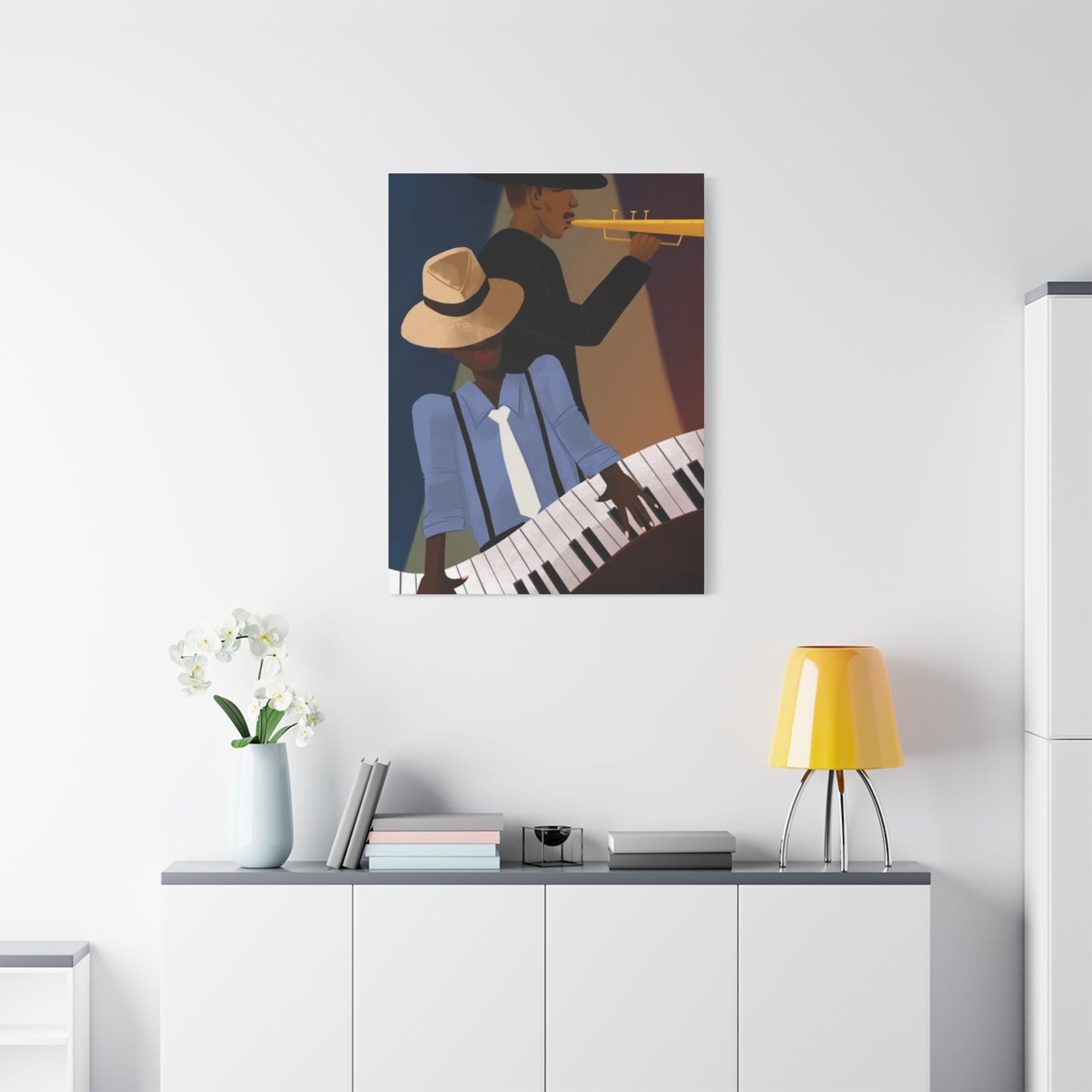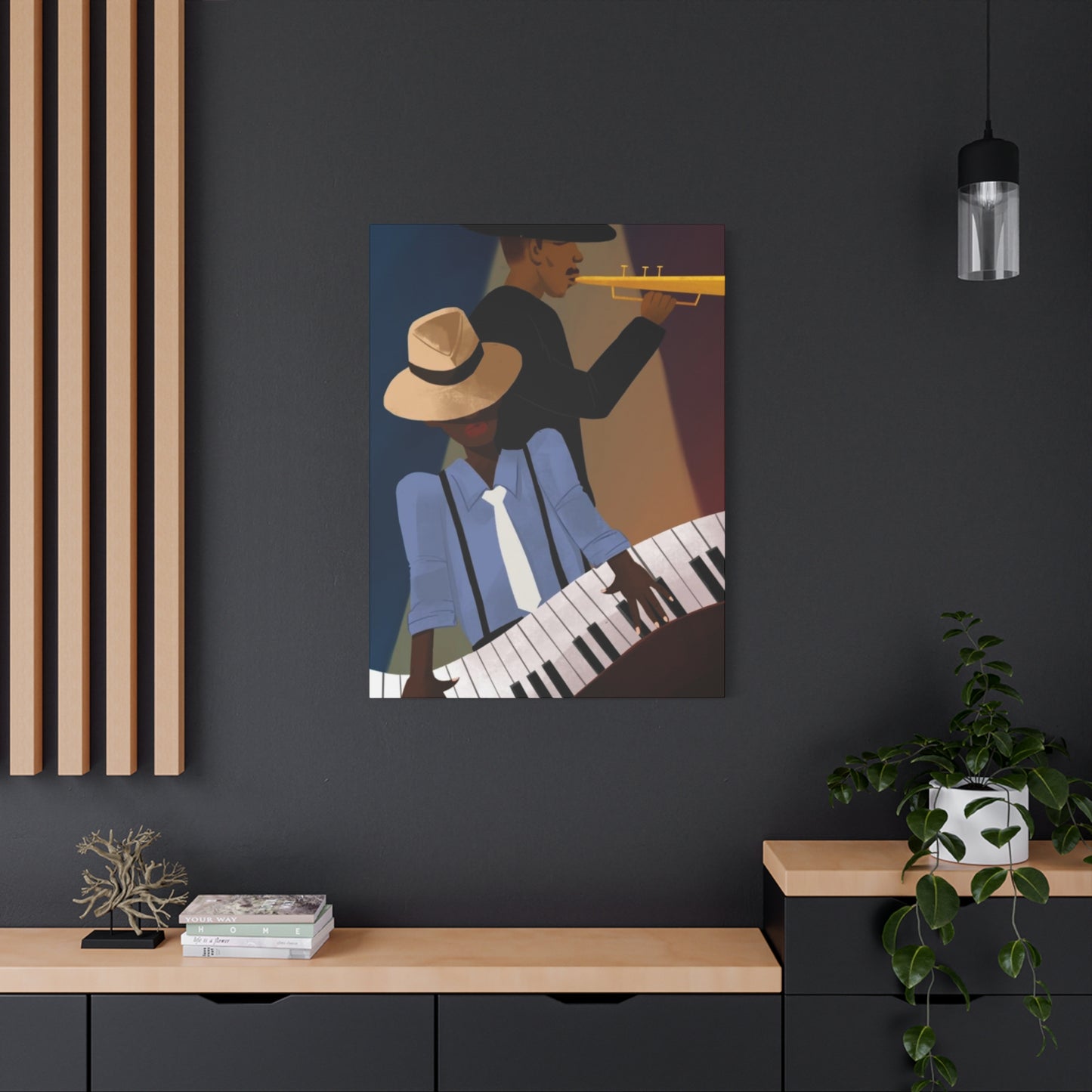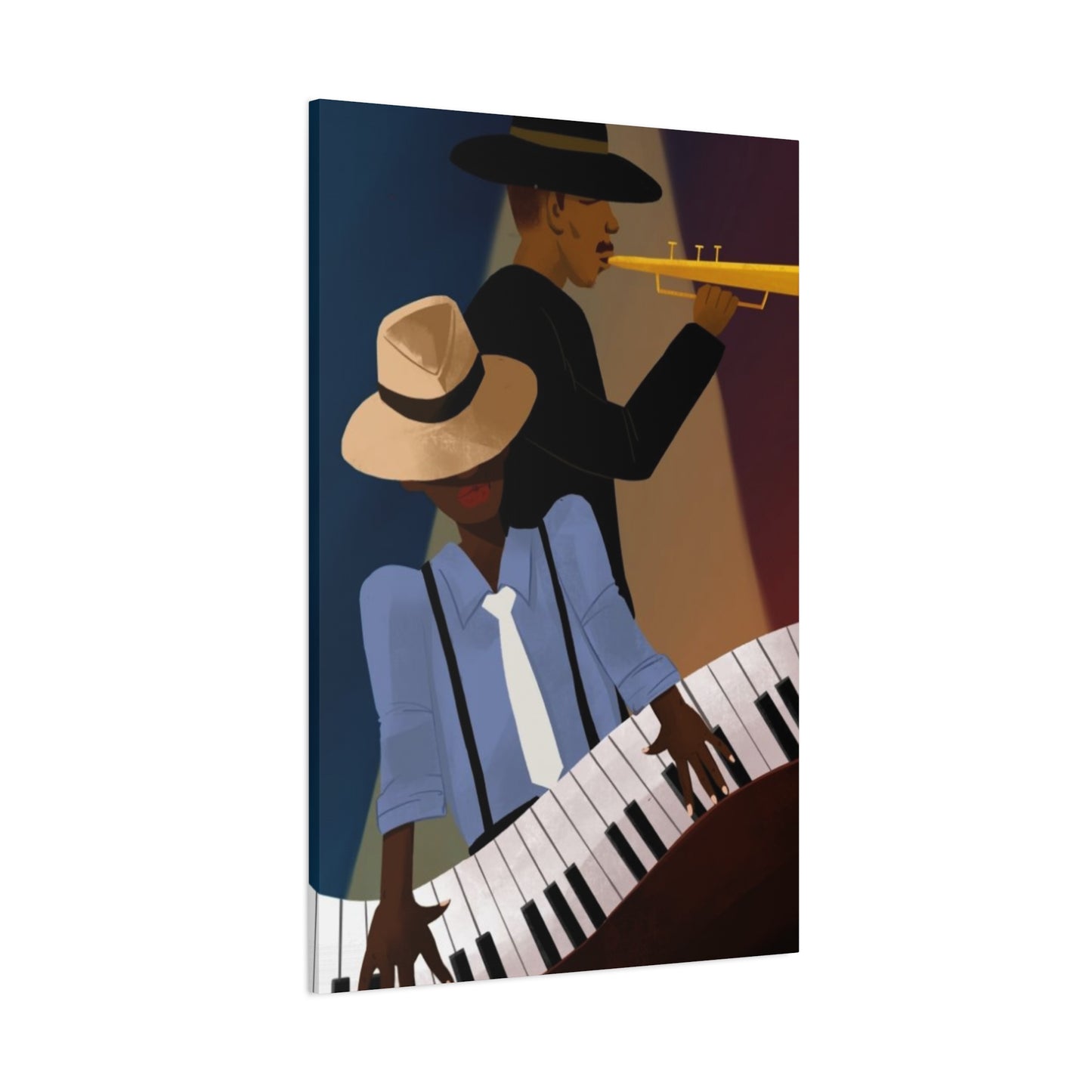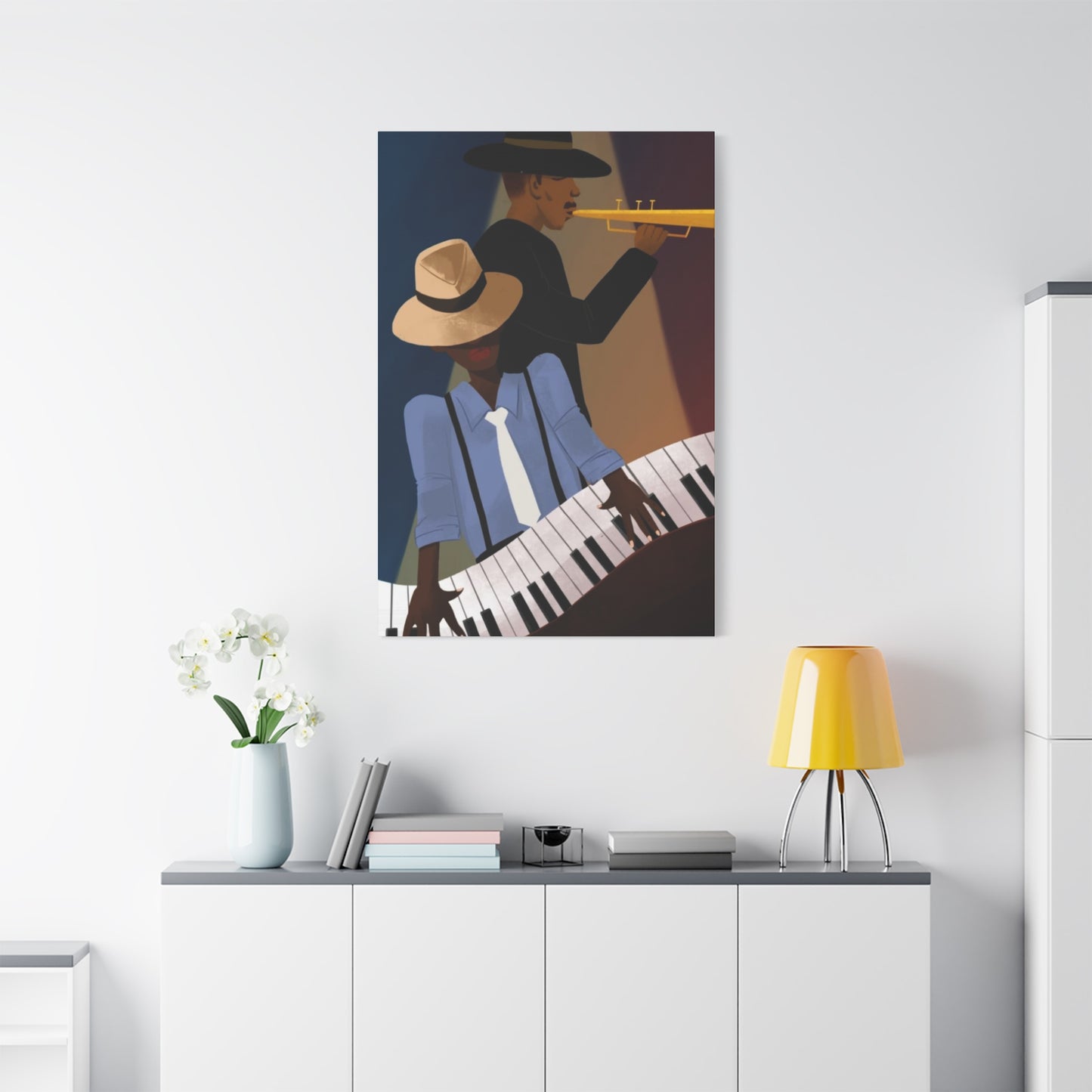Jazz Artists Wall Art: Bringing Musical Legends Into Your Living Environment
The timeless appeal of jazz music transcends generations, and now you can capture that same energy and sophistication through carefully curated jazz wall art. These visual representations of musical genius serve as powerful focal points that transform ordinary rooms into sophisticated sanctuaries celebrating America's greatest cultural contribution. From portraits of legendary performers to abstract interpretations of musical concepts, jazz-themed artwork offers endless possibilities for creating environments that resonate with rhythm, soul, and artistic excellence.
Jazz wall art represents more than mere decoration; it embodies a lifestyle choice that reflects appreciation for creativity, improvisation, and cultural heritage. When you incorporate these pieces into your living environment, you're not simply adding visual elements to your walls but rather creating a dialogue between music and visual arts that enhances the entire atmosphere of your home. The synergy between these art forms creates an immersive experience that speaks to both the eyes and the soul, establishing connections with the rich history of American music while adding contemporary elegance to modern living environments.
Historical Significance of Jazz in Visual Arts
The relationship between jazz music and visual arts dates back to the early twentieth century when both art forms were breaking traditional boundaries and establishing new creative paradigms. During the Harlem Renaissance, artists like Aaron Douglas and Palmer Hayden began capturing the essence of jazz through their paintings, creating visual interpretations of the musical revolution that was transforming American culture. This period established the foundation for what would become a lasting artistic movement, where painters, illustrators, and graphic designers would continue to find inspiration in the rhythmic complexity and emotional depth of jazz music.
Throughout the decades, renowned artists have attempted to translate the improvisational nature of jazz into visual form, resulting in artwork that captures the spontaneity, energy, and sophisticated complexity that defines the genre. Artists like Stuart Davis created abstract compositions that mirrored the syncopated rhythms and harmonic progressions found in jazz compositions, while photographers like Herman Leonard documented the intimate moments of jazz performance, creating iconic images that have become synonymous with the genre itself.
The evolution of jazz-inspired visual art has paralleled the musical genre's own development, from the swing era through bebop, cool jazz, fusion, and beyond. Each period has produced distinctive visual styles that reflect the musical innovations of their time, creating a rich tapestry of artistic expression that continues to influence contemporary artists and collectors. This historical context adds depth and meaning to modern jazz wall art, connecting today's collectors with a century-long tradition of artistic cross-pollination between musical and visual expression.
Contemporary artists continue this tradition by creating fresh interpretations of jazz themes, incorporating modern techniques and materials while maintaining respect for the genre's historical significance. Digital art, mixed media compositions, and contemporary photographic techniques now contribute to the ever-expanding universe of jazz-inspired visual art, ensuring that this artistic tradition remains vibrant and relevant for new generations of music and art enthusiasts.
Iconic Jazz Musicians in Visual Art
The pantheon of jazz legends provides endless inspiration for visual artists, with each musician's unique style and personality offering distinct artistic possibilities. Miles Davis, with his cool demeanor and innovative approach to trumpet playing, has been depicted in countless artistic interpretations that range from minimalist portraits emphasizing his iconic silhouette to complex compositions that attempt to visualize his musical innovations. His image has become synonymous with sophisticated cool, making Miles Davis artwork particularly popular among collectors who appreciate both musical excellence and visual elegance.
John Coltrane's spiritual intensity and revolutionary saxophone technique have inspired artists to create works that emphasize emotional depth and spiritual transcendence. Artistic representations of Coltrane often incorporate abstract elements that suggest his improvisational genius and his quest for musical enlightenment. These pieces typically feature bold colors, dynamic compositions, and symbolic elements that reflect his profound impact on both music and consciousness, making them powerful focal points for meditation and contemplation.
Duke Ellington's sophisticated compositions and elegant persona have translated into artwork that emphasizes refinement, complexity, and architectural precision. Visual interpretations of the Duke often incorporate elements that suggest his role as a composer and bandleader, with compositions that mirror the structured improvisation that characterized his orchestral arrangements. These pieces appeal to collectors who appreciate both musical sophistication and visual complexity, offering layers of meaning that reward careful contemplation.
Charlie Parker's revolutionary bebop innovations and tragic personal story have inspired artists to create works that capture both his musical genius and his human vulnerability. Artistic interpretations of Bird often emphasize movement, speed, and technical virtuosity while also suggesting the emotional depth and personal struggles that informed his music. These pieces resonate with viewers who understand both the triumph and tragedy inherent in the artistic life, creating powerful emotional connections through visual representation.
Billie Holiday's emotional vulnerability and unique vocal style have inspired countless artistic interpretations that emphasize her ability to transform pain into beauty through musical expression. Visual representations of Lady Day often incorporate elements that suggest both strength and fragility, creating complex portraits that honor her artistic legacy while acknowledging the challenges she faced throughout her career. These pieces serve as powerful reminders of art's capacity to transform suffering into something beautiful and meaningful.
Artistic Styles and Movements in Jazz Wall Art
Abstract expressionism finds natural synergy with jazz music, as both art forms emphasize spontaneity, emotional expression, and the breaking of traditional boundaries. Abstract jazz wall art often incorporates gestural brushwork, dynamic color relationships, and compositional structures that mirror the improvisational nature of jazz performance. These pieces capture the essence of jazz without relying on literal representation, instead using visual elements like line, color, and form to suggest musical concepts such as rhythm, harmony, and improvisation.
Figurative representations of jazz musicians and scenes offer viewers more literal connections to the music while still allowing for artistic interpretation and stylistic variation. Realistic portraits of legendary performers provide intimate connections with musical heroes, while stylized interpretations allow artists to emphasize particular aspects of a musician's personality or playing style. These figurative works often incorporate symbolic elements that reference specific songs, albums, or musical concepts, creating layers of meaning that enhance the viewing experience for jazz enthusiasts.
Pop art approaches to jazz imagery often emphasize the commercial and cultural impact of jazz music, incorporating elements from album covers, concert posters, and media representations. These pieces typically feature bold colors, graphic elements, and contemporary techniques that place jazz within the context of popular culture while maintaining respect for its artistic integrity. Pop art jazz pieces appeal to collectors who appreciate both the musical and cultural significance of jazz while enjoying contemporary artistic approaches.
Street art and graffiti-inspired jazz artwork brings the music into dialogue with urban culture, reflecting jazz's historical connections to city life and its ongoing relevance in contemporary urban environments. These pieces often incorporate techniques and aesthetics borrowed from hip-hop culture, creating bridges between musical generations while honoring jazz's role as a foundational element in African American musical expression. This style particularly appeals to younger collectors who want to connect with jazz heritage while maintaining contemporary aesthetic sensibilities.
Photorealistic artwork captures the precise details of jazz performance and personality, often based on iconic photographs or live performance moments. These pieces require exceptional technical skill and offer viewers the opportunity to study the finest details of musical expression and personality. Photorealistic jazz art appeals to collectors who appreciate both technical artistic excellence and historical documentation, providing windows into specific moments in jazz history with unprecedented clarity and detail.
Color Psychology in Jazz Art
The color palette chosen for jazz wall art significantly impacts the emotional atmosphere and psychological effect of the artwork within your living environment. Deep blues, often associated with the genre itself, create feelings of contemplation, sophistication, and emotional depth that mirror the introspective nature of many jazz compositions. These blues can range from midnight navy that suggests intimate club settings to lighter azure tones that evoke the freedom and expansiveness found in jazz improvisation.
Warm golden tones frequently appear in jazz artwork, referencing the golden age of jazz while creating feelings of warmth, nostalgia, and luxurious sophistication. These colors connect viewers with the historical richness of jazz culture while adding warmth and elegance to contemporary living environments. Golden yellows and rich oranges can suggest the warm glow of stage lighting, the gleam of brass instruments, or the golden memories associated with legendary performances.
Rich burgundy and wine colors in jazz artwork create associations with upscale nightclub environments and sophisticated evening entertainment. These colors add dramatic intensity and emotional depth to artwork while creating connections with the social and cultural contexts in which jazz music traditionally flourished. Burgundy tones work particularly well in formal environments where they can enhance feelings of elegance and cultural refinement.
Black and white compositions emphasize the timeless nature of jazz music while creating striking visual contrast that commands attention. Monochromatic jazz artwork connects viewers with the classic photography and film imagery associated with jazz history while offering versatile options that work well with various decorative schemes. The absence of color in these pieces often intensifies focus on form, composition, and emotional expression, creating powerful statements that transcend temporary color trends.
Vibrant accent colors like electric green, bright purple, or hot pink can energize jazz artwork and connect it with the innovative, boundary-pushing spirit that has always characterized the music. These bold color choices reflect jazz's role as a revolutionary art form while adding contemporary energy to traditional themes. When used judiciously, these accent colors can create focal points that draw viewers into the artwork and energize the entire room.
Framing and Presentation Techniques
Professional framing significantly enhances the impact and longevity of jazz wall art while protecting these valuable pieces from environmental damage. Museum-quality framing techniques utilize acid-free matting materials and UV-protective glazing to ensure that artwork maintains its original appearance for decades. The investment in proper framing pays dividends through both aesthetic enhancement and artwork preservation, making it essential for serious collectors who want to protect their investment while maximizing visual impact.
Frame selection should complement both the artwork and the surrounding environment without overwhelming the piece itself. Classic black frames work well with most jazz artwork, providing neutral borders that emphasize the artwork without competing for attention. Rich wood tones can add warmth and traditional elegance, particularly effective with vintage-style pieces or artwork featuring warm color palettes. Metallic frames in gold, silver, or bronze can add contemporary sophistication while connecting with the metallic elements often found in jazz instrumentation.
Matting choices significantly impact the presentation and perception of framed artwork. White and off-white mats provide clean, classic presentation that works with virtually any artwork style, while colored mats can create specific relationships between the artwork and its presentation. Double matting, using two mat layers of different colors or textures, adds visual depth and sophistication to the framing presentation while providing additional protection for the artwork.
Lighting considerations play crucial roles in maximizing the impact of framed jazz artwork. Picture lights, track lighting, or recessed fixtures should provide even illumination without creating glare or hot spots that could damage the artwork. LED lighting options offer energy efficiency and reduced heat generation while providing excellent color rendering that accurately displays the artwork's intended colors and details.
Gallery-style hanging systems allow for easy rearrangement and professional presentation of multiple pieces. These systems use adjustable cables and hooks that hang from ceiling or wall-mounted tracks, enabling precise positioning and simple reconfiguration as collections grow or room arrangements change. This flexibility particularly benefits collectors who enjoy rotating their displays or frequently acquire new pieces.
Room-by-Room Applications
Living room environments offer prime opportunities for displaying substantial jazz wall art pieces that can serve as conversation starters and aesthetic focal points. Large-scale artwork featuring iconic musicians or abstract interpretations of musical concepts work particularly well above sofas, mantels, or prominent wall areas where they can be appreciated from multiple seating positions. The living room's social nature makes it ideal for artwork that reflects personal taste while encouraging discussion and connection with guests.
Bedroom applications for jazz wall art should emphasize relaxation and personal connection with the music. Intimate portraits of favorite musicians, abstract pieces with soothing color palettes, or artwork that reflects personal jazz memories can create environments conducive to rest and reflection. The private nature of bedroom environments allows for more personal artistic choices that might not work in public areas but provide meaningful connections for the room's occupants.
Home office and study environments benefit from jazz artwork that provides inspiration and mental stimulation without creating distractions from work activities. Black and white photographs of musicians in contemplative poses, abstract pieces with sophisticated color schemes, or artwork featuring inspirational quotes from jazz legends can enhance productivity while maintaining connections with artistic expression. The intellectual nature of jazz music makes it particularly appropriate for environments dedicated to creative or analytical work.
Kitchen and dining areas can incorporate jazz artwork that enhances the social and entertainment aspects of these gathering places. Vintage-style posters, colorful interpretations of jazz scenes, or artwork featuring musical instruments can create welcoming atmospheres that encourage conversation and celebration. These areas often benefit from artwork that can withstand higher humidity and temperature variations while maintaining visual appeal.
Bathroom applications require careful consideration of humidity and moisture protection, but jazz artwork can add sophistication and personality to these often-overlooked environments. Properly sealed prints, metal artwork, or humidity-resistant materials allow for artistic expression in these private spaces. Jazz themes work particularly well in bathrooms designed with vintage or sophisticated aesthetics.
Hallway and transitional areas provide opportunities for creating artistic journeys through sequences of related jazz artwork. Gallery walls featuring multiple smaller pieces, chronological arrangements showing jazz evolution, or thematic groupings can transform mundane transition areas into engaging artistic experiences. These areas often provide excellent opportunities for displaying collections that might overwhelm smaller rooms.
Creating Gallery Walls with Jazz Themes
Thematic gallery walls organize multiple pieces around specific jazz concepts, musicians, or historical periods, creating cohesive visual narratives that enhance understanding and appreciation of the music. A Miles Davis gallery wall might include various artistic interpretations of the trumpeter, album cover artwork, and abstract pieces inspired by his musical innovations. This approach allows for deep exploration of specific jazz subjects while creating visually engaging compositions that reward detailed examination.
Chronological arrangements trace the evolution of jazz through visual representation, displaying artwork that represents different eras, styles, and innovations in jazz history. These educational galleries can start with early New Orleans jazz imagery and progress through swing, bebop, cool jazz, fusion, and contemporary styles. This approach provides historical context while creating dynamic visual progressions that reflect the music's ongoing evolution and innovation.
Instrumental focus galleries organize artwork around specific jazz instruments, celebrating the unique contributions of piano, trumpet, saxophone, bass, drums, and other instruments to the jazz ensemble. These collections can include both representational artwork featuring the instruments themselves and abstract interpretations of the sounds and techniques associated with each instrument. This approach appeals to musicians and music educators while creating visually coherent themes for artwork selection and arrangement.
Color-coordinated galleries use consistent color schemes to create unified visual presentations that work harmoniously with room decor while maintaining jazz thematic content. These arrangements prioritize visual harmony while still celebrating jazz culture and history. Monochromatic schemes, complementary color relationships, or gradual color progressions can create sophisticated presentations that enhance both the artwork and the surrounding environment.
Mixed media galleries incorporate various artistic techniques and materials to create rich, textured presentations that reflect jazz music's diversity and innovation. These arrangements might include paintings, photographs, prints, sculptures, and mixed media pieces that work together to create comprehensive celebrations of jazz culture. The variety in techniques and materials mirrors the diversity found within jazz music itself while creating visually engaging displays that reward extended contemplation.
Size and scale considerations ensure that gallery wall compositions remain balanced and proportional to their architectural settings. Mixing large statement pieces with smaller supporting works creates visual hierarchy and maintains viewer interest while preventing overwhelming or underwhelming effects. Proper spacing between pieces allows each work to be appreciated individually while contributing to the overall composition's success.
Digital Art and Contemporary Jazz Expression
Digital art techniques offer contemporary artists unprecedented opportunities for creating innovative jazz-inspired artwork that pushes traditional boundaries while maintaining connections with musical heritage. Computer-generated imagery, digital painting, and photo manipulation techniques enable artists to create works that would be impossible through traditional media, opening new avenues for expressing musical concepts through visual representation. These techniques particularly excel at capturing the fluid, improvisational nature of jazz through animated sequences, layered compositions, and interactive elements.
Interactive digital installations bring jazz artwork into the twenty-first century by incorporating motion sensors, sound integration, and responsive visual elements that change based on viewer presence or environmental conditions. These pieces can literally respond to music being played in the room, creating visual performances that accompany jazz listening experiences. This technology creates new possibilities for experiencing art that mirrors jazz music's interactive, performative nature while adding contemporary technological sophistication.
Projection mapping techniques can transform entire walls or rooms into immersive jazz experiences, displaying artwork that changes and evolves over time. These installations can incorporate elements from jazz history, real-time music visualization, and abstract artistic interpretation to create environments that completely immerse viewers in jazz culture. This technology particularly appeals to collectors who want cutting-edge presentation methods that reflect both artistic innovation and technological advancement.
Digital printing technologies enable the creation of large-scale jazz artwork with exceptional detail, color accuracy, and durability. High-resolution printing on various materials including canvas, metal, acrylic, and specialty papers allows artists and collectors to realize artistic visions at any scale while maintaining professional quality. These technologies democratize access to high-quality jazz artwork while enabling customization and personalization that traditional art forms cannot match.
Augmented reality applications can enhance static jazz artwork with additional layers of information, animation, or interactive content accessible through smartphone or tablet applications. Viewers can point their devices at artwork to access additional information about the musicians depicted, hear related music, or experience animated versions of static images. This technology creates bridges between traditional visual art and contemporary digital experiences while providing educational opportunities for jazz newcomers.
Non-fungible tokens and blockchain technologies are creating new markets and collection possibilities for digital jazz artwork, enabling artists to create unique digital pieces that can be owned, traded, and displayed through various digital platforms. These technologies provide authentication and provenance tracking for digital artwork while creating new economic models for artists and collectors in the digital age.
Music-Inspired Abstract Art Concepts
Synesthetic interpretation involves translating musical elements like rhythm, harmony, and melody into visual equivalents through abstract artistic techniques. Artists working in this area attempt to make jazz music visible through color relationships, compositional structures, and dynamic visual elements that mirror musical concepts. These pieces allow viewers to experience jazz through multiple sensory channels simultaneously, creating unique artistic experiences that enhance understanding and appreciation of both musical and visual arts.
Rhythmic visualization transforms the complex rhythmic patterns characteristic of jazz into visual compositions that emphasize repetition, variation, and syncopation through geometric forms, repeating elements, and compositional structures. These pieces help viewers understand jazz's sophisticated rhythmic concepts while creating dynamic visual experiences that maintain interest through complexity and variation. The visual representation of rhythm creates new ways of experiencing time-based artistic concepts through static visual media.
Harmonic color theory applies musical harmony concepts to color relationships within abstract compositions, creating visual pieces that reflect the sophisticated harmonic progressions found in jazz music. Artists working in this area might use color temperature, saturation, and value relationships to suggest chord progressions, modulations, and harmonic tensions that characterize jazz compositions. These pieces appeal to viewers with musical knowledge while remaining accessible to those who appreciate pure visual relationships.
Improvisational techniques in visual art mirror jazz musicians' spontaneous creativity by incorporating elements of chance, immediate response, and intuitive decision-making into the artistic process. Artists might use techniques like automatic drawing, chance-based color selection, or time-limited creation periods to replicate the spontaneous creativity that characterizes jazz performance. These pieces capture the essence of jazz creativity while creating unique works that cannot be exactly replicated.
Motion and energy representation attempts to capture the kinetic aspects of jazz performance through dynamic compositional elements, gestural mark-making, and visual techniques that suggest movement and energy. These pieces help viewers experience the physical aspects of jazz performance while creating visually exciting compositions that energize room environments. The emphasis on movement and energy makes these pieces particularly effective in active living areas where their dynamic qualities can be fully appreciated.
Emotional abstraction focuses on translating the emotional content of jazz music into visual form through color choices, compositional techniques, and symbolic elements that evoke specific feelings or moods. These pieces might capture the melancholy of a ballad, the excitement of uptempo swing, or the introspective quality of a solo piano piece through purely visual means. This approach creates artwork that resonates emotionally with viewers while honoring the emotional depth that characterizes great jazz music.
Album Cover Art as Wall Decoration
Classic album covers from the golden age of jazz represent some of the most iconic graphic design achievements in music history, combining sophisticated visual aesthetics with strong conceptual connections to the music they represent. Albums like Miles Davis's "Kind of Blue," John Coltrane's "A Love Supreme," and Bill Evans's "Waltz for Debby" feature cover artwork that has become as legendary as the music itself. These covers work exceptionally well as wall decoration because they combine historical significance, visual appeal, and personal connection for jazz enthusiasts.
Contemporary reinterpretations of classic album covers allow artists to pay homage to jazz history while adding their own creative perspectives and artistic techniques. These pieces might reimagine famous covers through different artistic styles, updated color schemes, or contemporary artistic techniques while maintaining the essential visual concepts that made the originals memorable. This approach appeals to collectors who appreciate both traditional jazz heritage and contemporary artistic innovation.
Custom album cover displays can incorporate actual vintage records, protective framing, and professional presentation techniques to create museum-quality presentations of significant jazz recordings. These displays might include the album cover, the vinyl record itself, and additional information about the recording or its historical significance. This approach particularly appeals to serious jazz collectors who want to display their most treasured recordings as artistic objects.
Large-scale reproductions of classic album covers can serve as major focal points in room designs, particularly when printed on high-quality materials and professionally framed. The familiar imagery of classic jazz albums creates immediate recognition and emotional connection while providing sophisticated visual elements that work well with contemporary furniture and accessories. These pieces work particularly well in music rooms, entertainment areas, or any environment where their cultural significance can be appreciated.
Thematic album cover collections can organize multiple covers around specific record labels, time periods, artists, or visual styles to create cohesive wall displays that tell broader stories about jazz history and culture. A Blue Note Records display might include covers from various artists and time periods that share the label's distinctive visual approach, while a 1960s avant-garde collection might feature covers that reflect the experimental nature of that era's music.
Technical considerations for displaying album covers include proper lighting to prevent fading, climate control to prevent damage from humidity and temperature fluctuations, and protective framing that prevents direct contact between the artwork and environmental contaminants. UV-filtering glazing and museum-quality matting materials ensure that these valuable cultural artifacts remain pristine for future generations while serving their current decorative purposes.
Photography in Jazz Art
Performance photography captures the energy, emotion, and technical precision of jazz musicians during live performances, providing viewers with intimate access to moments of musical creation and artistic expression. Legendary photographers like Herman Leonard, William Claxton, and Francis Wolff created images that have become as iconic as the musicians they photographed, establishing visual vocabularies that continue to influence jazz photography today. These photographs work exceptionally well as wall art because they combine documentary value with artistic excellence.
Portrait photography of jazz musicians provides intimate glimpses into the personalities behind the music, capturing not just physical appearance but also the character traits and emotional qualities that inform musical expression. These portraits often reveal vulnerability, intensity, wisdom, or playfulness that helps viewers connect with musicians as human beings rather than just artistic icons. The intimate nature of portrait photography makes these pieces particularly effective in personal environments where they can facilitate ongoing relationships with musical heroes.
Candid documentary photography captures jazz musicians in unguarded moments, providing authentic insights into their lives, personalities, and creative processes. These images might show musicians preparing for performances, interacting with fellow artists, or simply existing as human beings outside their public roles. This approach creates more complete pictures of artistic lives while providing visual narratives that extend beyond the music itself.
Abstract photography techniques can interpret jazz concepts through visual experimentation, multiple exposures, motion blur, and other creative approaches that transform literal documentation into artistic interpretation. These pieces use photographic techniques to suggest musical concepts like improvisation, rhythm, and emotional expression while maintaining connections to photographic realism. This approach appeals to viewers who appreciate both photographic technique and musical abstraction.
Historical documentation through photography provides valuable insights into jazz culture, venues, audiences, and social contexts that surrounded the music's development and performance. These images serve educational purposes while offering nostalgic connections to jazz history and culture. Historical jazz photography helps contemporary viewers understand the social and cultural environments in which this music developed and thrived.
Contemporary jazz photography continues documenting today's jazz artists and venues, ensuring that current developments in jazz culture receive the same careful attention that historical photographers provided for their generations. These contemporary works help maintain continuity between jazz's historical legacy and its ongoing evolution while providing current examples of jazz's continued vitality and relevance.
Mixed Media and Sculptural Approaches
Three-dimensional jazz art incorporates sculptural elements that extend artwork into room environments, creating immersive experiences that engage viewers from multiple angles and perspectives. These pieces might incorporate actual musical instruments, found objects, or specially created sculptural elements that relate to jazz themes while providing visual interest that changes as viewers move around the work. The dimensional aspect of these pieces makes them particularly effective as focal points in larger rooms or as bridge elements between different architectural features.
Collage techniques combine multiple artistic elements including photographs, sheet music, magazine clippings, fabric, and other materials to create rich, layered compositions that reflect jazz music's eclectic nature and cultural complexity. These pieces can incorporate historical documents, contemporary materials, and personal memorabilia to create unique artistic statements that tell complex stories about jazz culture and personal connection to the music. The handmade quality of collage work appeals to viewers who appreciate craftsmanship and individual artistic expression.
Mixed media installations might incorporate lighting, sound, or kinetic elements to create comprehensive artistic experiences that engage multiple senses simultaneously. These pieces can respond to environmental conditions, viewer presence, or actual music being played in the room, creating dynamic artworks that change over time and in response to their surroundings. This approach particularly appeals to collectors who want cutting-edge artistic experiences that push traditional boundaries.
Textile and fiber arts offer unique opportunities for creating jazz-inspired artwork that adds texture and warmth to room environments while maintaining sophisticated artistic content. Quilts, tapestries, and woven pieces can incorporate jazz themes through pattern, color, and symbolic imagery while providing the softness and texture that metal and glass artwork cannot offer. These pieces work particularly well in bedrooms or other environments where warmth and comfort are priorities.
Assemblage art creates jazz-themed compositions from found objects, musical instruments, and other three-dimensional elements arranged in cases, shadow boxes, or wall-mounted compositions. These pieces can incorporate vintage instruments, concert memorabilia, photographs, and other objects that relate to specific musicians, venues, or personal jazz experiences. The personal nature of assemblage work makes these pieces particularly meaningful for collectors who want to incorporate their own jazz-related objects into artistic displays.
Metal work and sculpture can interpret jazz themes through abstract forms that suggest movement, rhythm, and musical energy while providing dramatic focal points that command attention in any room setting. Bronze, steel, aluminum, and other metals can be shaped, colored, and finished to create pieces that reflect light, create shadows, and provide tactile interest that engages viewers physically as well as visually. These pieces work particularly well in contemporary environments where their industrial materials complement modern architectural elements.
Vintage and Reproduction Options
Authentic vintage posters and prints from jazz's golden age provide direct connections to historical jazz culture while offering unique decorative opportunities that cannot be replicated through contemporary production. These pieces carry the patina of age, the authenticity of historical context, and the scarcity that makes them particularly valuable to serious collectors. However, their rarity and cost make them inaccessible to many enthusiasts who would appreciate their historical significance and visual appeal.
High-quality reproductions of vintage jazz materials provide affordable access to iconic imagery while maintaining visual impact and historical reference. Modern printing technologies can reproduce vintage materials with exceptional accuracy, capturing subtle color variations, paper textures, and aging characteristics that make reproductions nearly indistinguishable from originals except under expert examination. These reproductions allow broader audiences to enjoy classic jazz imagery while preserving original materials from damage that might result from regular display.
Restoration and conservation of original vintage materials requires specialized expertise and careful consideration of historical value versus display potential. Some vintage pieces benefit from professional cleaning and stabilization that can extend their life while maintaining their historical authenticity, while others may be too fragile for regular display and should be reserved for special occasions or archival storage. Professional conservators can assess vintage jazz materials and recommend appropriate treatment options.
Authentication and provenance research helps collectors determine the legitimacy and historical significance of vintage jazz materials, ensuring that investments in original pieces are based on accurate information about their origins and importance. This research can uncover fascinating stories about how particular pieces were created, distributed, and preserved, adding layers of meaning that enhance appreciation for both the artistic and historical value of the collection.
Dating and historical context research helps collectors understand when and where particular pieces were created, who was responsible for their creation, and what role they played in jazz history and culture. This information enhances appreciation for individual pieces while helping collectors build coherent collections that tell broader stories about jazz development and cultural impact. Understanding historical context also helps in making informed decisions about conservation, display, and insurance for valuable pieces.
Market considerations for vintage jazz collectibles include rarity, condition, historical significance, and aesthetic appeal, all of which contribute to both current value and future appreciation potential. Collectors should consider their goals in acquiring vintage materials, whether for pure aesthetic enjoyment, historical preservation, or investment purposes, as these different goals may suggest different acquisition and conservation strategies.
Lighting Considerations for Jazz Art
Natural light provides the most accurate color rendering for jazz artwork but requires careful management to prevent damage from ultraviolet radiation and excessive heat. South-facing windows provide the brightest natural light but also pose the greatest risk for artwork damage, while north-facing exposure offers more consistent, gentler illumination that works well for artwork display. Window treatments like UV-filtering films, adjustable blinds, or sheer curtains can help manage natural light levels while maintaining the benefits of daylight illumination.
Artificial lighting systems should provide even, adjustable illumination that accurately renders artwork colors without generating excessive heat that could damage the pieces over time. LED lighting systems offer the best combination of energy efficiency, heat reduction, and color accuracy, making them ideal for artwork illumination. Track lighting systems provide flexibility for adjusting light direction and intensity as artwork arrangements change or as different pieces are displayed.
Picture lighting fixtures mounted directly above or below individual pieces provide focused illumination that highlights artwork without affecting the general room lighting scheme. These fixtures should be positioned to eliminate glare and shadows while providing even coverage across the entire artwork surface. Battery-operated picture lights offer installation flexibility for locations where hardwired electrical connections are not practical or desirable.
Color temperature considerations ensure that artificial lighting complements both the artwork and the room's general lighting scheme without creating conflicts or distortions in color perception. Warm white light temperatures work well with jazz artwork featuring warm colors, while cooler temperatures may be more appropriate for black and white pieces or artwork featuring cool color schemes. Adjustable color temperature systems provide maximum flexibility for different artworks and viewing conditions.
Glare prevention requires careful positioning of lighting fixtures and consideration of viewing angles from different locations within the room. Glazed artwork is particularly susceptible to glare problems that can make pieces difficult or impossible to appreciate properly. Adjustable fixtures allow for fine-tuning light direction to minimize glare while maintaining adequate illumination for proper artwork appreciation.
Conservation lighting practices protect artwork from long-term damage while providing adequate illumination for enjoyment and appreciation. This includes using UV-filtering materials, maintaining moderate light levels, and avoiding extended exposure to high-intensity illumination. Timer systems can automatically control lighting duration, ensuring that artwork receives appropriate protection during periods when it is not being actively viewed.
Budgeting and Investment Considerations
Price ranges for jazz wall art vary enormously depending on factors like artist reputation, rarity, condition, size, and historical significance. Original paintings by established artists can cost thousands or tens of thousands of dollars, while high-quality prints and reproductions may be available for hundreds of dollars or less. Understanding these price ranges helps collectors set realistic budgets and make informed decisions about where to invest their decorating dollars for maximum impact and satisfaction.
Investment potential for jazz artwork depends on numerous factors including artist reputation, rarity, historical significance, and market demand, but collectors should primarily purchase pieces they genuinely enjoy rather than treating artwork purely as financial investments. While some jazz artwork has appreciated significantly over time, art markets can be unpredictable and should not be considered reliable investment vehicles. The primary return on jazz artwork investment should be personal enjoyment and aesthetic enhancement of living environments.
Authentication and appraisal services help collectors understand the value and authenticity of significant pieces, particularly important for expensive purchases or insurance purposes. Professional appraisers who specialize in jazz-related artwork and memorabilia can provide written valuations that support insurance claims, estate planning, or resale decisions. This professional assessment is particularly important for vintage or rare pieces where authenticity questions could significantly impact value.
Insurance considerations for valuable jazz artwork include proper documentation, professional appraisals, and specialized coverage that accounts for appreciation in value over time. Standard homeowner's insurance may not provide adequate coverage for valuable artwork, making additional insurance or policy riders necessary for proper protection. Detailed photographic documentation and professional appraisals support insurance claims in case of damage or loss.
Market trends in jazz artwork collecting can influence both availability and pricing of different types of pieces, helping collectors make informed timing decisions for major purchases. Understanding whether particular artists, styles, or themes are currently popular or undervalued can help collectors maximize their purchasing power while building collections that provide both personal satisfaction and potential future value appreciation.
Budget allocation strategies help collectors balance immediate desires with long-term collection goals, ensuring that available funds are used effectively to build coherent, satisfying collections over time. This might involve starting with less expensive prints and reproductions while saving for significant original pieces, or focusing on particular themes or artists rather than attempting to cover all aspects of jazz culture simultaneously.
Care and Maintenance of Jazz Art
Cleaning procedures for jazz artwork depend on the materials and techniques used in the piece's creation, with different approaches required for paintings, prints, photographs, and mixed media works. Regular dusting with soft brushes or microfiber cloths helps prevent accumulation of surface dirt, while deeper cleaning should generally be left to professional conservators who understand the specific requirements of different artistic media. Improper cleaning can cause irreversible damage to valuable artwork.
Environmental control helps protect jazz artwork from damage caused by temperature fluctuations, humidity changes, and air pollution. Ideal conditions include stable temperatures between 65-70 degrees Fahrenheit, relative humidity between 45-55%, and clean air circulation that removes dust and pollutants without creating drafts that could cause physical damage. Monitoring equipment can help maintain awareness of environmental conditions and alert collectors to potential problems.
Handling procedures minimize risk of accidental damage when moving, cleaning, or examining artwork. This includes wearing clean cotton gloves when handling unframed pieces, supporting artwork properly during transport, and avoiding contact with painted surfaces or other vulnerable areas. Even seemingly minor contact can cause cumulative damage over time, making proper handling procedures essential for long-term preservation.
Storage requirements for artwork not currently on display include proper support, protection from light and environmental contaminants, and organization systems that prevent damage from overcrowding or inadequate support. Acid-free materials, proper ventilation, and regular monitoring help ensure that stored artwork remains in good condition until it is needed for display. Climate-controlled storage areas provide optimal conditions for long-term preservation.
Damage assessment and repair decisions require professional expertise to determine appropriate conservation approaches that preserve both the artistic and historical integrity of jazz artwork. Some types of damage can be safely addressed by qualified conservators, while other problems may be irreversible or may require treatments that alter the artwork's character. Understanding these options helps collectors make informed decisions about conservation investments.
Preventive conservation practices focus on preventing damage before it occurs rather than addressing problems after they develop. This includes proper framing, appropriate lighting, environmental control, security measures, and handling procedures that minimize risks to artwork health and longevity. Preventive measures are generally more cost-effective than remedial treatments and help preserve artwork in its best possible condition.
Conclusion
Jazz artists wall art offers a dynamic and soulful way to bring the spirit of musical legends into your living environment, enriching your space with rhythm, history, and vibrant culture. These artworks celebrate the pioneers and icons of jazz—from the smoky blues of saxophonists to the smooth elegance of vocalists—capturing their energy, passion, and timeless influence. By integrating jazz-themed art into your home, you not only honor this rich musical tradition but also infuse your surroundings with creativity, movement, and emotional depth.
One of the most compelling features of jazz artists wall art is its ability to convey the improvisational and expressive nature of jazz music through visual media. The bold colors, fluid lines, and evocative compositions often found in these pieces mirror the spontaneity and soulfulness that define the genre. Whether portrayed in striking portraits, abstract interpretations, or vintage-inspired posters, the art evokes the atmosphere of jazz clubs and the cultural vibrancy of the jazz era, transforming any room into a lively homage to musical innovation.
Beyond its aesthetic appeal, jazz wall art serves as a source of inspiration and connection. For music lovers, musicians, and casual listeners alike, these images provide a daily reminder of jazz’s power to transcend boundaries, challenge norms, and celebrate individuality. Displaying such art in your living space can spark creativity, encourage relaxation, and foster a deeper appreciation for the artistry and history of jazz music.
Additionally, jazz artists wall art fits beautifully into various décor styles, from eclectic and bohemian to modern and industrial. Its versatility allows it to complement diverse environments, adding warmth and character whether in a cozy living room, a dedicated music studio, or a stylish office. The presence of jazz-themed art helps create an ambiance that is both culturally rich and visually stimulating.
In conclusion, jazz artists wall art is more than decoration—it’s a vibrant tribute to musical legends that transforms your living environment into a space alive with passion, creativity, and history. By bringing these iconic figures and their stories into your home, you cultivate an atmosphere that celebrates the enduring magic of jazz.

















